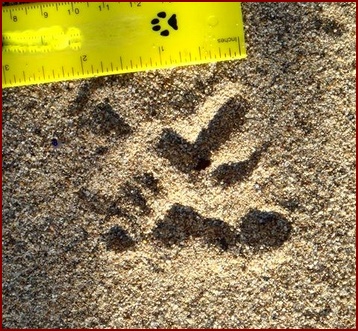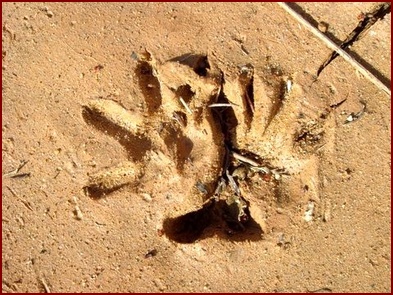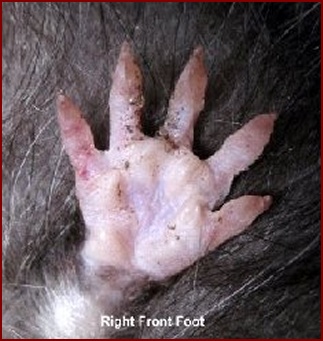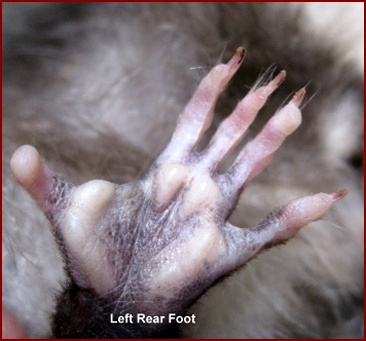COPYRIGHT 2012 DICK NEWELL
 |

ANALYZING THE OPOSSUM TRACK

Front~Rear: The five bulbous toes on the front foot are splayed out like the rays of the sun and are about equal in length. The rear track has four fingers and an opposing thumb that points towards the body. This thumb is very apparent.
 |
 |
 |
Gait: Common gaits include a slow walk or a trot with a stride of about 9". It will often indirect register in the track.
Once you recognize these unique tracks in the field you will never forget this animal. When you see what appears to be a 2" wide "pile of tracks" look for an opposing toe that is similar in shape to your thumb.
 |
Right~Left: On the right front track there is a little more free space between digits 1-2-3 than there is between digits 3-4-5.



 |



